EFFECTIVE COMMUNICATION
Position employees and leaders to establish credibility, respectability, and have a positive impact by conveying confidence, purpose, and clarity in their verbal, non-verbal, and e-communications.
Topics include:
- Key Elements of the Voice
- Non-Verbal Cues
- Techniques for Writing Effective Emails
- Active vs. Passive Listening
- Giving / Receiving Feedback
- Having Difficult Conversations
- Non-Violent Communication & Empathy
- Accent Reduction
Please Note: Accent Reduction is a separate program.
NETWORKING SAVVY
Position employees and leaders to effectively navigate a work event, and speak about themselves and the company with confidence and clarity.
Topics include:
- Techniques for Effectively Working a Room
- Value Proposition / Elevator Pitches
- Business Card Protocol
- Strategies for Navigating Food, Drink, and Conversation
- How to Handle Awkward Interactions
PROGRAMS
Effective Workplace Communication for Employees
A one-day group learning session that focuses on giving employees verbal, non-verbal, listening, and email strategies and techniques for being effective communicators. The following themes will be covered:
MODULE 1: First Impressions
MODULE 2: Verbal
MODULE 3: Non-Verbal Cues
MODULE 4: Face-to-Face Communication
MODULE 5: Listening
MODULE 6: Written Communication
MODULE 7: Building Rapport
Outcome: Employees will complete the session with key techniques and strategies that they can immediately use to develop and strengthen their communication skills.
Link to the one-day Communicating with Confidence, Clarity and Credibility Program
Communicating with Confidence, Clarity, and Credibility
A one-day Group Learning Session – interactive group sessions introduce supervisors and managers to key communication strategies and techniques. The following themes are covered:
- Our World Perception and how it affects our impressions of others;
- First Impressions: How do people perceive me and why?;
- Key foundational communication models, to include:
- Body Language
- Voice / Words
- Active Listening
- Difficult Conversation Model
- Brain Physiology: why we respond the way we do
- Marshall Rosenberg and Empathy
- Feedback: delivering / receiving / feedback loop
- What is my general communication style? *
* Please note: participants will complete a brief Assessment during the session. This Assessment will convey in general terms the type of communicator a supervisor/manager is. KATEN CONSULTING will be reviewing the strengths and limitations associated with each style in order to help supervisors best understand how to tailor / “flex” their styles when communicating with others.
- Flexing my Style: How do I “flex” my style to most effectively communicate with others?
Link to the 2 ½ -day Communicating with Confidence, Clarity and Credibility Program
Communicating with Confidence, Clarity, and Credibility
A 2 ½ -day Group Learning Session – two interactive group sessions introduce supervisors and managers to key communication strategies and techniques and a ½ day strategies session is used to follow-up. The following themes are covered:
Please Note: Prior to Day 1 participants complete a D.I.S.C Assessment.
DAY 1:
Day 1 focuses on increasing awareness to how each participant communicates both informally and by reviewing in detail the results of the D.I.S.C Assessment. Topics include:
- What is my D.I.S.C Communication Style?
- Strengths of Each Style
- Potential Limitations of the Different Styles
- “Flexing” My Style: quick cues to help me recognize someone’s style? communicating with colleagues who have similar/differing styles.
DAY 2:
Day 2 focuses on increasing awareness to key communication strategies and techniques. Topics include:
- Our World Perception and how it affects our impressions of others;
- First Impressions: How do people perceive me and why?;
- Key foundational communication models, to include:
- Body Language
- Voice / Words
- Active Listening
- Difficult Conversation Model
- Brain Physiology: why we respond the way we do
- Marshall Rosenberg and Empathy
- Feedback: delivering / receiving / feedback loop
- How do I “flex” my style within each communication model /strategy specifically to most effectively communicate with others?
½ DAY STRATEGIES SESSION
The ½ day Group Learning Session helps supervisors / managers to review and practice applying key communication strategies covered in training program, to include:
- Review key communication models covered during training program. The following themes may be covered:
- First Impressions: communicating through body language, words, voice
- Reflective Listening
- Difficult Conversation Model
- Brain Physiology & P/R/D
- Feedback: types, delivering, feedback loop
- Marshall Rosenberg ~ Feelings & Needs
- Empathy
- “Flexing” Styles: quick cues for recognizing someone’s style
- Share real-world situations that participants can apply communication strategies to so as to further develop / strengthen their communication skills;
- Address supervisors’ / managers’ challenges and exchange best practices so that they leave the training with additional strategies to more successfully navigate workplace situations.

